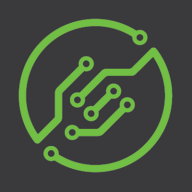

Splunk Observability Cloud and Evanios compete in the IT monitoring and analytics category. Splunk appears to have the upper hand in advanced analytics and seamless system integration, while Evanios shines in proactive incident management and IT operations.
Features: Splunk Observability Cloud excels with real-time analytics, comprehensive dashboards, and robust integration capabilities. It provides holistic data insights crucial for decision-making. Evanios stands out with intelligent automation, efficient incident prediction, and correlation capabilities, streamlining IT operations management and proficient incident resolution.
Room for Improvement: Splunk could expand its proactive incident management and enhance AI-driven analytics for better predictions. More comprehensive automation could be advantageous. Evanios may improve data visualization tools and real-time analytics capabilities. Enhancing integration with external systems and strengthening its analytics could provide a more competitive edge.
Ease of Deployment and Customer Service: Splunk Observability Cloud offers straightforward deployment and strong customer support, ensuring smooth ecosystem integration. Its seamless integration benefits enterprises with established IT systems. Evanios provides flexible deployment options adaptable to various organizational environments and is noted for its proactive and attentive customer service.
Pricing and ROI: Splunk Observability Cloud tends to involve higher upfront costs; however, its extensive data analysis potential justifies the investment for enterprises needing comprehensive insights. Evanios presents a cost-effective option with competitive pricing and an emphasis on reducing downtime, offering solid ROI through operational efficiency improvements.
Using Splunk has saved my organization about 30% of our budget compared to using multiple different monitoring products.
Anyone working in front-end management should recognize the market price to see the true value of end-user monitoring.
I have definitely seen a return on investment with Splunk Observability Cloud, particularly through how fast it has grown and how comfortable other teams are in relying on its outputs for monitoring and observability.
On a scale of 1 to 10, the customer service and technical support deserve a 10.
They have consistently helped us resolve any issues we've encountered.
They often require multiple questions, with five or six emails to get a response.
We've used the solution across more than 250 people, including engineers.
As we are a growing company transitioning all our applications to the cloud, and with the increasing number of cloud-native applications, Splunk Observability Cloud will help us achieve digital resiliency and reduce our mean time to resolution.
I would rate its scalability a nine out of ten.
I would rate its stability a nine out of ten.
We rarely have problems accessing the dashboard or the page.
Unlike NetScout or regular agents for APM, RUM has many problems during the POC phase because customer environments vary widely.
The out-of-the-box customizable dashboards in Splunk Observability Cloud are very effective in showcasing IT performance to business leaders.
The next release of Splunk Observability Cloud should include a feature that makes it so that when looking at charts and dashboards, and also looking at one environment regardless of the product feature that you're in, APM, infrastructure, RUM, the environment that is chosen in the first location when you sign into Splunk Observability Cloud needs to stay persistent all the way through.
There is room for improvement in the alerting system, which is complicated and has less documentation available.
Splunk is a bit expensive since it charges based on the indexing rate of data.
It is expensive, especially when there are other vendors that offer something similar for much cheaper.
It appears to be expensive compared to competitors.
Splunk provides advanced notifications of roadblocks in the application, which helps us to improve and avoid impacts during high-volume days.
For troubleshooting, we can detect problems in seconds, which is particularly helpful for digital teams.
It offers unified visibility for logs, metrics, and traces.
| Product | Market Share (%) |
|---|---|
| Splunk Observability Cloud | 1.8% |
| Evanios | 0.2% |
| Other | 98.0% |

| Company Size | Count |
|---|---|
| Small Business | 20 |
| Midsize Enterprise | 10 |
| Large Enterprise | 43 |
A key component of the Event Management process is consolidation of events from across the enterprise. By consolidating disparate events into a single solution, they can be de-duplicated and correlated. For example, network failure events can be correlated with system failures, and then prioritized based on service impact.
Reduce the noise
Evanios Integrations allows filtering and processing close to the event source, keeping the weight off of the ServiceNow system for increased performance. Filters are easily configured. EVA, the Evanios consolidation point also has built in event flood control features, to protect against unexpected event storms which can quickly overload traditional integrations.
Splunk Observability Cloud offers sophisticated log searching, data integration, and customizable dashboards. With rapid deployment and ease of use, this cloud service enhances monitoring capabilities across IT infrastructures for comprehensive end-to-end visibility.
Focused on enhancing performance management and security, Splunk Observability Cloud supports environments through its data visualization and analysis tools. Users appreciate its robust application performance monitoring and troubleshooting insights. However, improvements in integrations, interface customization, scalability, and automation are needed. Users find value in its capabilities for infrastructure and network monitoring, as well as log analytics, albeit cost considerations and better documentation are desired. Enhancements in real-time monitoring and network protection are also noted as areas for development.
What are the key features?In industries, Splunk Observability Cloud is implemented for security management by analyzing logs from detection systems, offering real-time alerts and troubleshooting for cloud-native applications. It is leveraged for machine data analysis, improving infrastructure visibility and supporting network and application performance management efforts.
We monitor all IT Infrastructure Monitoring reviews to prevent fraudulent reviews and keep review quality high. We do not post reviews by company employees or direct competitors. We validate each review for authenticity via cross-reference with LinkedIn, and personal follow-up with the reviewer when necessary.